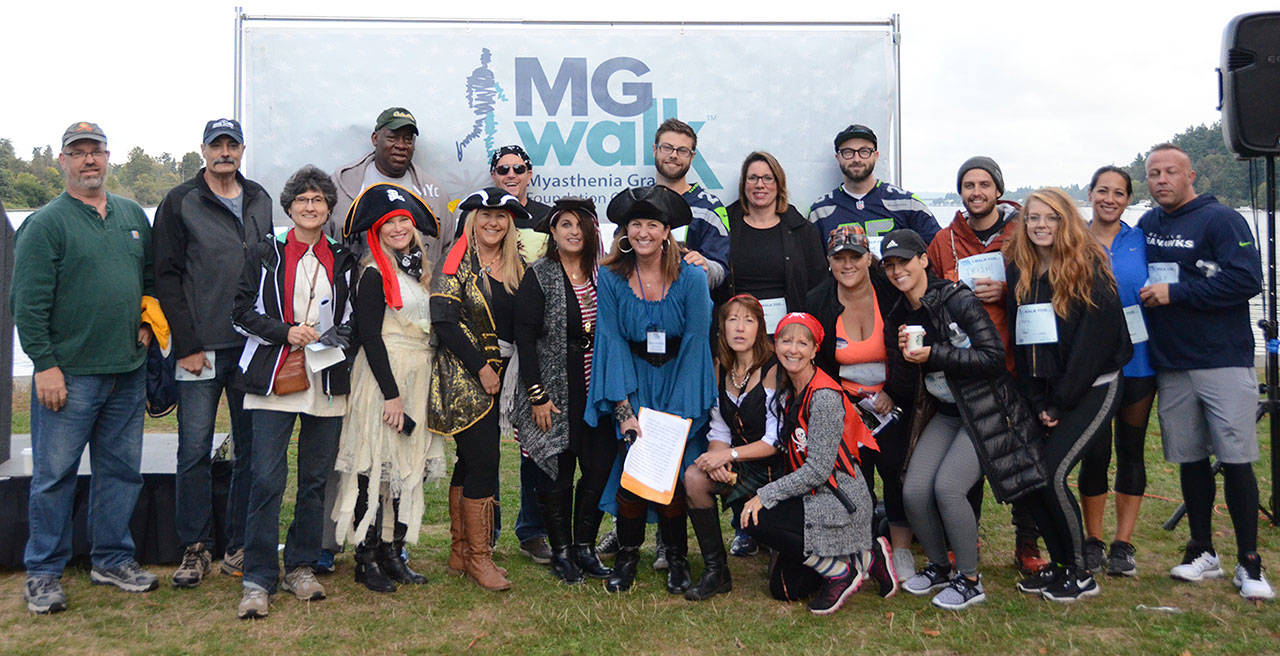“It’s like wearing cement shoes and walking upstream while smoking a cigarette.”
This is how Enumclaw resident Tricia Foerster feels almost every day with Myasthenia Gravis, a rare autoimmune disease that affects between 36,000 to 60,000 people in the U.S.
Most people have never heard of MG, she said, which is why she attends the annual Myasthenia Gravis Foundation of America awareness walk, which she admitted was an ironic way to bring awareness to a disease that makes you exhausted and unable to control your muscles. This year, the event was held Oct. 1 in Seattle’s Seward Park.
This year, Tricia was one of the walk’s keynote speakers, and she told the crowd that after many years of treatment, “I feel I now have the strength to bring a voice to MG — a slurry one — but it is a voice. With people like you and the MGFA, together we can bring awareness and hopefully a cure.”
Foerster lived most of her life with MG, but was only diagnosed with the disease in 2013. The symptoms, she believes, were allayed by the mediation and treatments she was already using for her lupus, Grace’s disease and Sjogrens, all other autoimmune diseases.
But as her work hours at the Covington urgent care she worked at increased, her MG became much worse — droopy eyes, slurring of the speech and poor muscle control became the norm. In hindsight, Foerster said her co-workers probably thought she was drunk.
But her life turned around when she was rooming a patient who said he thought she had MG, since he also had the disease.
“As a person who has so many autoimmune diseases, I had never heard of that,” Foerster said. “And I grew up in a family of — my mom’s a nurse, my sister’s a nurse, I’ve never heard of it.”
MG is more than just being tired or having a droopy face (which she calls her “MG face”). In clinical terms, the disease causes her immune system to attack the reception sites at her neurological junction. In other words, her immune system disrupts how her brain communicates with her muscles, making her weak or, in extreme cases, unable to move some of her limbs.
While that can affect the way she looks or moves, the most dangerous aspect of the disease is that it can also affect the muscles needed for breathing.
Armed with this knowledge, Foerster went on a girl’s night out with her friends to break the news to them.
“I was having a tough day with ptosis (when the upper eyelid droops over the eye), not being able to smile and just had a typical MG face,” she said at the event. “I told my friends how my neurologist explained that during these times to wear an eyepatch.”
But, of course, who wants to wear an eyepatch out in public? Not her, she said.
That’s when one of Foerster’s friends ran out to her car, where she had a stash of pirate gear she recently used at her job as a pre-school teacher.
“Without hesitation, they put them on and we continued our dinner wearing them,” Foerster continued. “I know I have had the best friends for the past 20 years but at that moment, words could not express how loved and supported I felt.”
This show of solidarity led to the formation of the “Chicks Ahoy,” MGFA walking team in 2014.
This past year, her team raised just over $1,000 for the MGFA. The event raised more than $18,500 for continued research on the disease.


